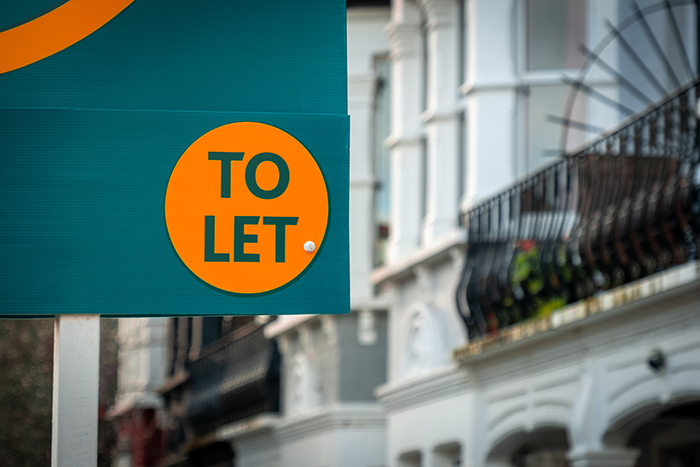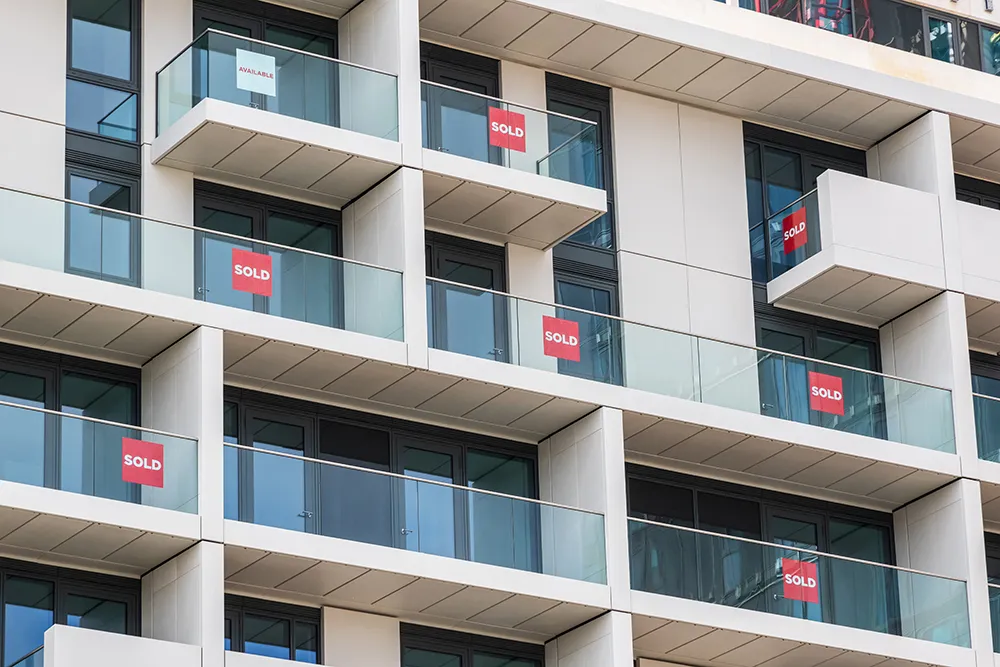
Half of private tenants in England saw their rents rise in the year to February by an average of just under 10%, data from the Office for National Statistics shows.
The official numbers watchdog says 50.6% of renters saw their housing costs increase, up from 36% a year ago, with an average hike of 9.7%, up from 7% in the previous 12 months.
It adds that in London 66.8% of private tenants saw their rents rise, the highest across all English regions, while 27.9% of renters in the North West experienced increases, the lowest.
It points out that the proportion of private rented flats that saw a price increase of 10% or more was 33.3% in London, this compares with 18.2% across the rest of England.
Tenants in the capital also saw their rents rise by 12% on average, higher than the English average.
Since early last year, flats and maisonettes “have consistently experienced the highest average percentage rental price change of all property types in London”, the body adds.
The average UK private rent is £1,013, according to data from Halifax published earlier this month.
Hargreaves Lansdown head of personal finance Sarah Coles says: “Runaway rents are crushing the finances of those trapped in increasingly expensive homes.
“The figures in London are particularly painful, with more than two-thirds of rents hiked an average of 12%. Given that private renting is far more common in London – at 29% compared to an average of 19% — the impact is felt even more widely.
“Runaway rents hit hard, because while yesterday’s Family Resources Survey showed that the average rent is the same as the average mortgage – at £150 a week – it makes up a much higher proportion of the income of renters, because they tend to be on lower wages.
“When this is added to a hoard of price hikes bearing down on renters – from energy to food and even tax – it’s easy to see why the Hargreaves Lansdown Savings & Resilience Barometer shows that renters are worse off across the board than their home-owning counterparts. Some 58% have poor or very poor financial resilience – compared to 18% of those with a mortgage and 11% of those who own outright.
“And it’s not just your day-to-day finances taking a hit, because renters are spending so much keeping the wolf from the door that they’re struggling to put anything aside to help them onto the property ladder.
“It’s why the Family Resources Survey showed people are renting for longer. Within every age category, the proportion in the private rental sector is up over a decade – with the proportion of those aged 35-44 who are renting rising from 19% to 26%.”
However, Private Finance technical director Chris Sykes points out that there are recent signs that funding costs of landlords are beginning to ease, which may over time feed through to lower rents.
Sykes says: “We have seen an improvement in some buy-to-let mortgage products on the back of swap rates reducing last week, a few examples include specialist lenders Paragon and Fleet mortgages, and also Virgin Money.
“Often with specialist buy-to-let lenders, lower mortgage rates mean lower stress rates in order for landlords to achieve higher borrowing amounts, which enables greater lending options and improved access to other mortgage products.
“Landlords not being able to achieve necessary levels of borrowing to refinance their current levels of debt is a continuous issue in the recent lending environment.
He adds: “Hopefully these changes are a sign of what’s to come and can provide more solutions to landlords either for their existing properties or to raise funds to improve their energy efficiency in light of new energy performance certificate regulations.”



